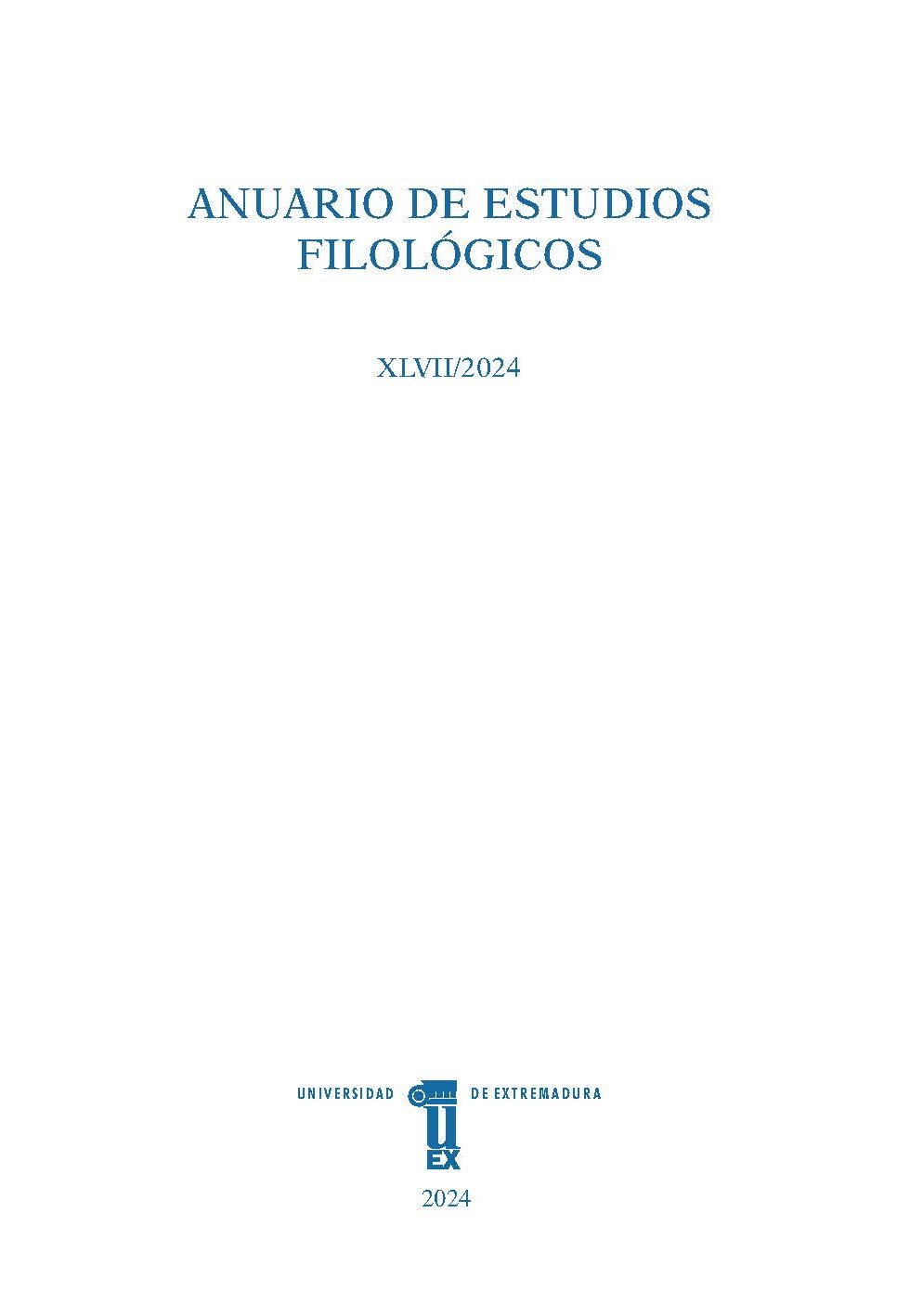Reading between the lines: analysis of the critical reception of El Mercader de Venecia by Nicolás González Ruiz (Teatro Español, 1947)
DOI:
https://doi.org/10.17398/2660-7301.47.209Keywords:
The Merchant of Venice, 1947, Spanish reception, theatrical reviews, ambivalenceAbstract
The present work sheds light on the reception of the Spanish version of The Merchant of Venice, premiered in Madrid in 1947, critically analysing unexplored archival material: the theatre reviews published in the press. It follows the methodological framework chosen by Prescott (2013) for the study of the English reception of Shakespeare’s plays, highlighting the mediating nature of theatre reviews and the need to read their subtext. The discoursive strategies used by different critics subject to the press law and theatrical censorship are analyzed when addressing a central theme of the text, the contrast between the Christian and Jewish universes, in the context of the New Spanish National Catholic State, where the myth of the Judeo-Masonic-Bolshevik collusion and the need to show an open spirit coexisted, after the defeat of the Axis countries in the Second World War.
Downloads
References
ABATE, Corinne S. (2002): «“Nerissa Teaches Me What to Believe”. Portia’s Wifely Empowerment in The Merchant of Venice». En Mahon y Macleod (2002: 284-304).
BULMAN, James C. (1991): Shakespeare in Performance: The Merchant of Venice. Manchester: Manchester UP.
BULMAN, James C. (1996): «Introduction. Shakespeare and Performance Theory». En Bulman, James C. (ed.): Shakespeare, Theory and Performance. London: Routledge, 1-12.
DHTE: Documentos para la historia del teatro español. Madrid: Centro de Documentación Teatral (en línea: <https://www.teatro.es/contenidos/documentosParaLaHistoria/Docs1947/cartelera.php?buscar=0&texto=shakespeare&button=Buscar&ciudad=Madrid&mayor=&menor>, consulta: 18 de enero de 2022).
DOMÉNECH RICO, Fernando (2017): «Cristóbal de Castro Gutiérrez». En Doménech Rico y Pérez Rasilla (2017: 103-106).
DOMÉNECH RICO, Fernando y PÉREZ RASILLA, Eduardo (coord.) (2017): Historia y Antología de la Crítica Teatral Española (1939-2016). Madrid: Centro Dramático Nacional.
DOMÍNGUEZ ARRIBAS, Javier (2009): El enemigo judeo-masónico en la propaganda franquista (1936-1945). Madrid: Marcial Pons Historia.
DOMÍNGUEZ ROMERO, Elena (2013): «Anglophilia and Popular Culture in the Francoist Spanish Press: The Case of Shakespearean Representations». En Fatu-Tutovenau, Andrada y Jarazo Álvarez, Rubén (eds.): Press, Propaganda and Politics: Cultural Periodicals in Francoist Spain and Communist Romania. Newcastle upon Tyne: Cambridge Scholars, 80-95.
DRAKAKIS, John (2010): «Introduction». En Shakespeare, William: The Merchant of Venice. London: Bloomsbury Arden Shakespeare, 1-160.
EDELMAN, Charles (ed.) (2002): The Merchant of Venice. Shakespeare in Production. Cambridge: CUP.
GARCÍA RUIZ, Víctor (1996): «Los mecanismos de la censura teatral en el primer franquismo y los pájaros ciegos de V. Ruiz Iriarte (1948)». Gestos: Teoría y práctica del teatro hispánico, 22, 59-85.
GENETTE, Gérard (1982): Palimpsestes. La littérature au second degré. Paris: Seuil.
GÓMEZ GARCÍA, Alba (2017): «Emilio Morales de Acevedo». En Doménech Rico y Pérez Rasilla (2017: 131-135).
HALIO, Jay L. (2002): «Singing Chords. Performing Shylock and Other Characters in The Merchant of Venice». En Mahon y Macleod (2002: 369-374).
HALIO, Jay L. (2021): «The Merchant of Venice in Performance». En Hatchuel, Sarah y Vienne-Guerrin, Nathalie (eds.): The Merchant of Venice. A Critical Reader. London: The Arden Shakespeare, 55-85.
HANITZSCH, Thomas (2007): «Deconstructing Journalism Culture: Toward a Universal Theory». Communication Theory, 17.4, 367-385 (https://doi.org/10.1111/j.1468-2885.2007.00303.x).
HORTMANN, Wilhelm (1998): Shakespeare on the German Stage. The Twentieth Century. Cambridge: CUP.
KÉBÉ, Serigne Mahanta (2002): Crítica teatral de posguerra en el periódico madrileño Arriba. Tesis Doctoral (1994). Universidad Complutense de Madrid (https://hdl.handle.net/20.500.14352/63230).
MAHON, John W. (2002): «The Fortunes of The Merchant of Venice from 1596 to 2001». En Mahon y Macleod (2002: 1-95).
MAHON, John W. y MACLEOD, Ellen (eds.) (2002): The Merchant of Venice. New Critical Essays. London: Routledge.
MONLEÓN, José (1971): Treinta años de teatro de la derecha. Barcelona: Tusquets.
MUÑOZ CÁLIZ, Berta (2005): El teatro crítico español durante el franquismo, visto por sus censores. Madrid: Fundación Universidad Española.
MUÑOZ CÁLIZ, Berta (2007): «El teatro silenciado por la censura franquista». Per Abbat, 3, 85-96.
NÚÑEZ RIVERO, Cayetano (2017): «La masonería y la Segunda República española (1931-1939)». Estudios de Deusto, 65.1, 243-270 (https://doi.org/10.18543/ed-65(1)2017pp243-270).
PACO, Mariano de (1987-1989): «El grupo Arte Nuevo y el teatro español de posguerra». Estudios Románicos, 5, 1065-1078.
PRESCOTT, Paul (2005): «Inheriting the Globe: The Reception of Shakespearean Space and Audience in Contemporary Reviewing». En Hodgdon, Barbara y Worthen, William B. (eds.): A Companion to Shakespeare and Performance. Malden, MA: Blackwell, 359-376.
PRESCOTT, Paul (2013): Reviewing Shakespeare: Journalism and Performance from the Eighteenth Century to the Present. Cambridge: CUP.
PRESTON, Paul (2011): «A Catalan Contribution to the Myth of the Contubernio Judeo-Masónico-Bolchevique». Modern Italy, 16.4, 461-472 (https://doi.org/10.1080/13532944.2011.61123).
PRESTON, Paul (2021): Arquitectes del terror. Franco i els artífex de l’odi. Barcelona: Base.
ROHR, Isabelle (2010): La derecha española y los judíos, 1898-1945. Antisemitismo y oportunismo. Valencia: PUV [2007].
SANTOLARIA, Cristina (2018): «Claves 1947. Modelos y espacios». En DHTE (en línea: <https://www.teatro.es/contenidos/documentosParaLaHistoria/Docs1947/modelosyEspacios.php>, consulta: 20 de enero de 2022).
SEVILLANO CALERO, Francisco (1998): Propaganda y medios de comunicación en el franquismo (1936-1951). Alicante: PUA.
SINOVA, Justino (1989): La censura de prensa durante el franquismo (1936-1951). Madrid: Espasa Calpe.
THOMPSON, Michael (2012): «The Order of the Visible and the Sayable: Theatre Censorship in Twentieth-Century Spain». Hispanic Research Journal, 13.2, 93-110 (https://doi.org/10.1179/174582012x13257549228534).
TORRES NEBRERA, Gregorio (2001): «Crónica de teatros (1940-1965): Conservadores, renovadores y disidentes». En López Criado, Fidel (coord.): Literatura y sociedad. El papel de la literatura en el siglo XX. A Coruña: UDC, 55-76.
VICKERS, Brian y BARKER, William (eds.) (2005): The Merchant of Venice. Shakespeare. The Critical Tradition. New York: Thoemmes Continuum.



